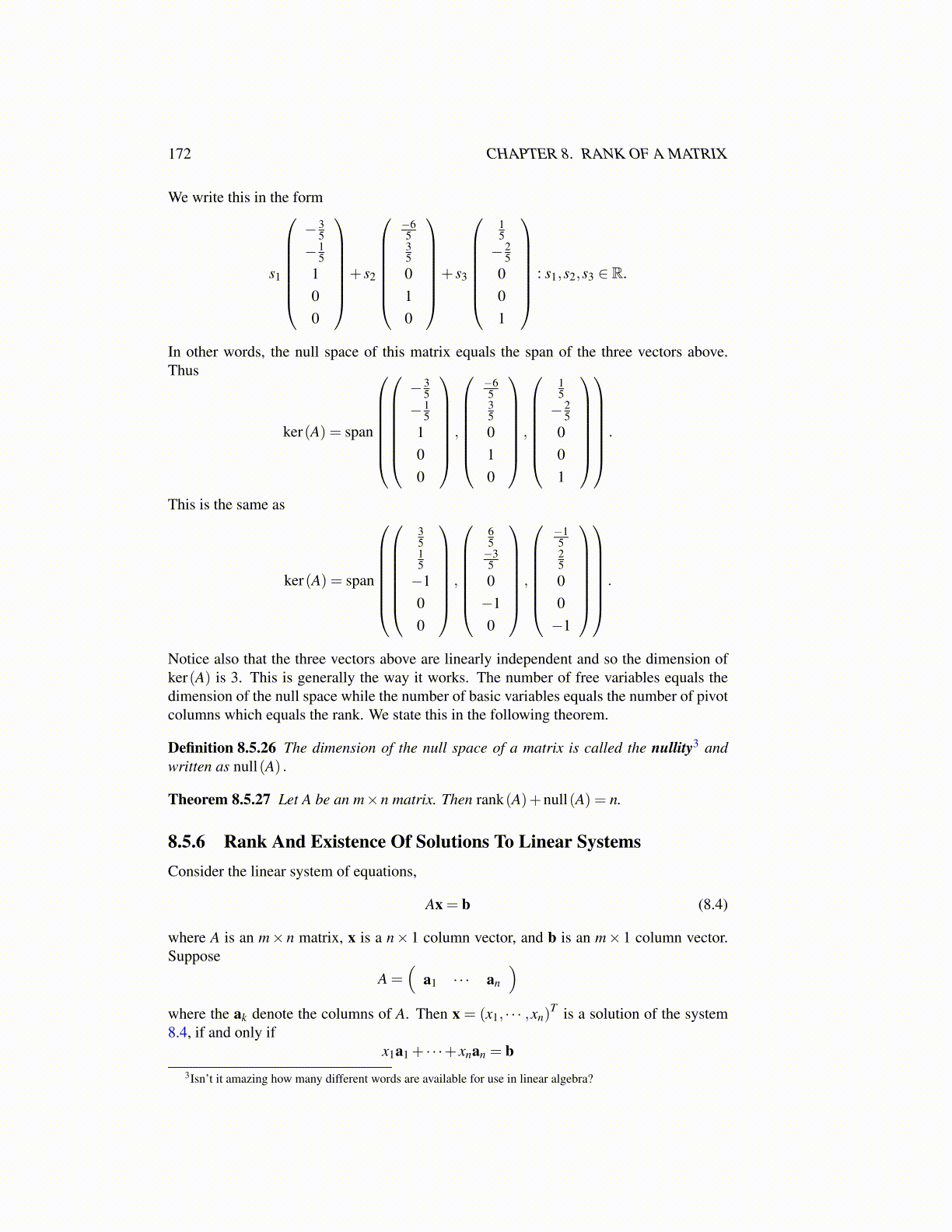
172 CHAPTER 8. RANK OF A MATRIX
We write this in the form
s1
− 3
5− 1
5100
+ s2
−6535010
+ s3
15− 2
5001
: s1,s2,s3 ∈ R.
In other words, the null space of this matrix equals the span of the three vectors above.Thus
ker(A) = span
− 3
5− 1
5100
,
−6535010
,
15− 2
5001
.
This is the same as
ker(A) = span
3515−100
,
65−350−10
,
−152500−1
.
Notice also that the three vectors above are linearly independent and so the dimension ofker(A) is 3. This is generally the way it works. The number of free variables equals thedimension of the null space while the number of basic variables equals the number of pivotcolumns which equals the rank. We state this in the following theorem.
Definition 8.5.26 The dimension of the null space of a matrix is called the nullity3 andwritten as null(A) .
Theorem 8.5.27 Let A be an m×n matrix. Then rank(A)+null(A) = n.
8.5.6 Rank And Existence Of Solutions To Linear SystemsConsider the linear system of equations,
Ax = b (8.4)
where A is an m× n matrix, x is a n× 1 column vector, and b is an m× 1 column vector.Suppose
A =(
a1 · · · an
)where the ak denote the columns of A. Then x = (x1, · · · ,xn)
T is a solution of the system8.4, if and only if
x1a1 + · · ·+ xnan = b3Isn’t it amazing how many different words are available for use in linear algebra?